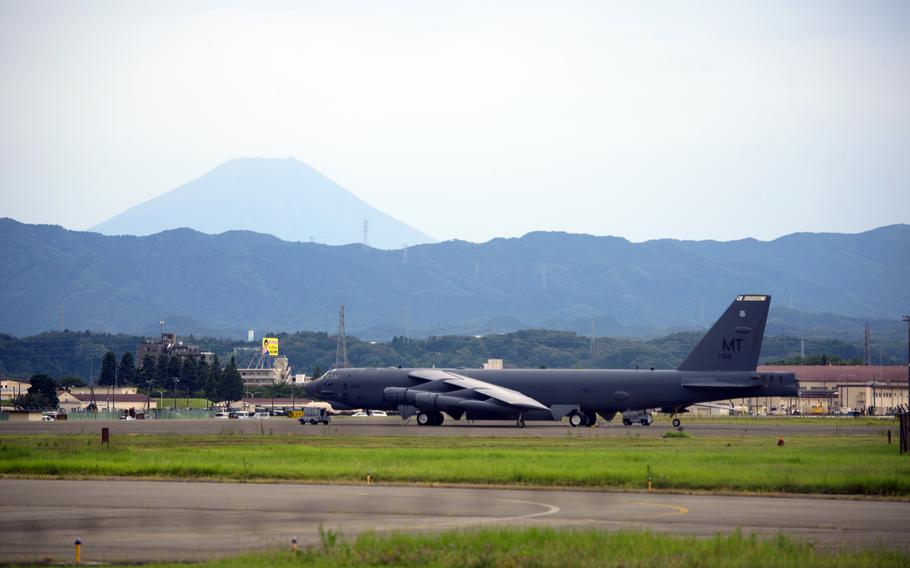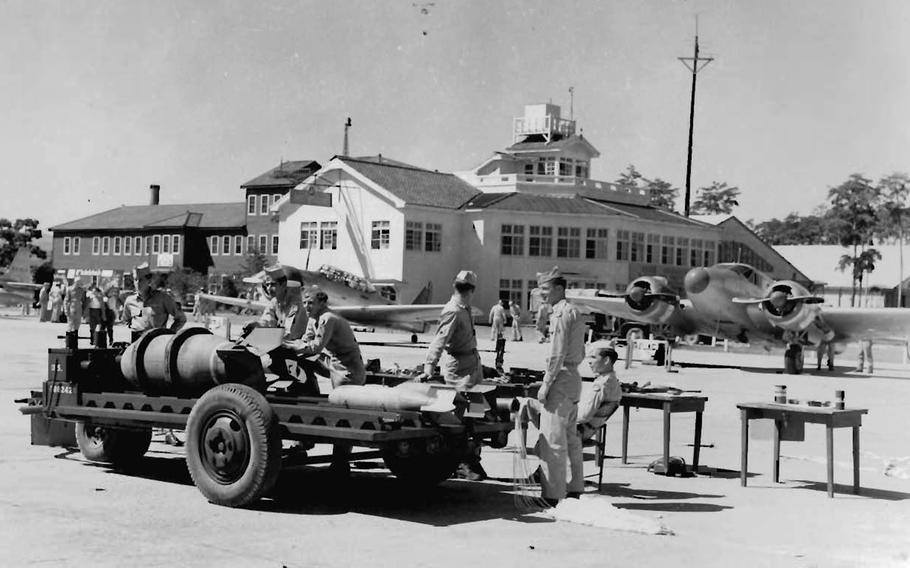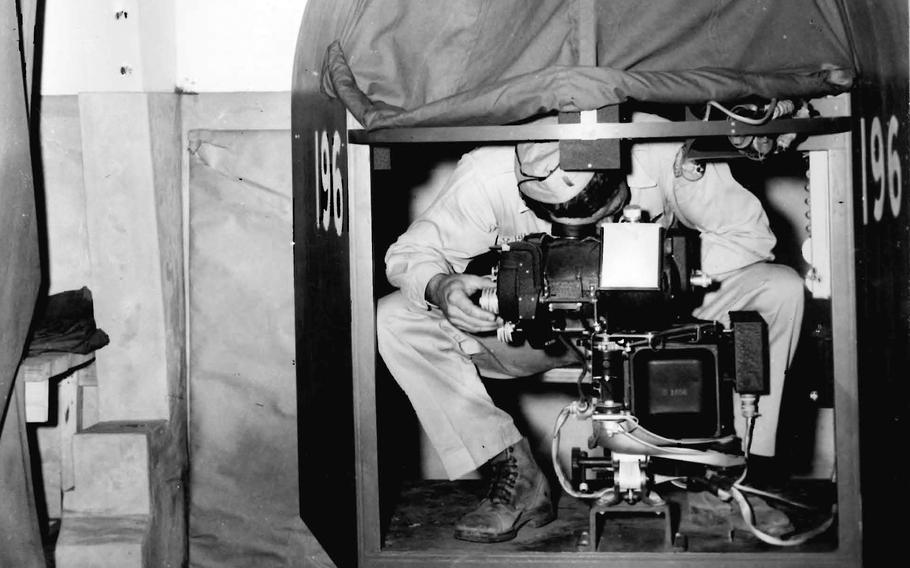
A B-52H Stratofortress bomber parks at Yokota Air Base, Japan, with Mount Fuji in the background, Thursday, July 13, 2023. (Seth Robson/Stars and Stripes)
YOKOTA AIR BASE, Japan — A B-52H Stratofortress’ sojourn at the home of U.S. Forces Japan in western Tokyo is a reminder of the airlift hub’s history as a bomber base.
The aircraft, assigned to the 5th Bomb Wing at Minot Air Force Base, N.D., diverted to Yokota on Wednesday morning due to an in-flight maintenance issue.
A base spokesman, Air Force 1st Lt. Danny Rangel, declined to say when the plane might depart, but it’s attracted Japanese aircraft buffs snapping photos from just outside the fence line.
B-52s from Minot and Barksdale Air Force Base, La., have been working out of Andersen Air Force Base, Guam, this month as part of the Air Force’s ongoing bomber task force missions intended to project U.S. air power in the region, according to an email from Pacific Air Forces on July 11.
A B-52 last landed at Yokota in 1989 during the annual Japanese-American Friendship Festival, Maj. Christopher Merian, a spokesman for Pacific Air Forces, said by email Wednesday.
However, the base was home to American bombers for decades before it became an airlift hub in 1971, according to 374th Airlift Wing historian Lesleigh Jones.
Fifteen Douglas A-26 Invaders from the U.S. Army Air Corps’ 3rd Bomb Group were stationed at Yokota between 1945 and 1950, she said Friday at Yokota. In 1950, the Far East Bomber Command arrived at the base with B-29 Superfortress bombers that flew Korean War missions.
“Yokota was almost exclusively a B-29 base until 1954,” she said.

This undated photo shows an armament display by the 13th Bomb Squadron at Yokota Air Base, Japan. (U.S. Air Force)
Several of the World War II-era bombers crashed during their tenure at Yokota.
A B-29 crew survived a November 1951 crash at Yokota, but seven Japanese and three American first responders died when bombs inside the plane exploded, damaging 100 homes in the surrounding community, Jones said.
At that time, Yokota’s east side, now primarily a housing area, was used for bomb storage. Workers have occasionally found unexploded ordnance in the area.
In the mid-1950s, Strategic Air Command came to Yokota and rotated bomber units through the base that flew B-36 Peacemakers, B-47 Stratojets, B-50 Superfortresses and B-52s, Jones said.
“The B-47s and B-52s were some of the largest aircraft of that era,” she said. During that period, Yokota’s runway was extended to its present 11,000 feet to accommodate those aircraft.

This undated photo shows a training device for A-26 Invader bombardiers assigned to the 3rd Bomb Group, which was stationed at Yokota Air Base, Japan, between 1945 and 1950. (U.S. Air Force)
The B-52 at Yokota this week has been flying since 1961, said Jones.
“They would have been a relatively common sight here years ago but not an everyday thing,” she said.
The B-52H entered service in 1961 and can carry up to 20 air-launched cruise missiles. The bombers have launched cruise missiles in several contingencies starting in the 1990s with Operation Desert Storm and culminating with Operation Inherent Resolve in 2016, according to an Air Force factsheet.
The aircraft is capable of flying at high subsonic speeds at altitudes of up to 50,000 feet and can carry nuclear or precision-guided conventional ordnance. It has an unrefueled combat range in excess of 8,800 miles, according to the factsheet.
The 3rd Bomb Wing was based at Yokota from the early 1960s until it was replaced by fighter units in the mid-1960s, Jones said.
The 374th Airlift Wing’s Iroquois “Huey” helicopters also began service at Yokota in 1971. The C-130 Hercules airlifters, predecessors of the wing’s C-130J Super Hercules, arrived at the base in the mid-1970s, she said.
Yokota has been home to CV-22 Osprey tilt-rotor aircraft since 2018.